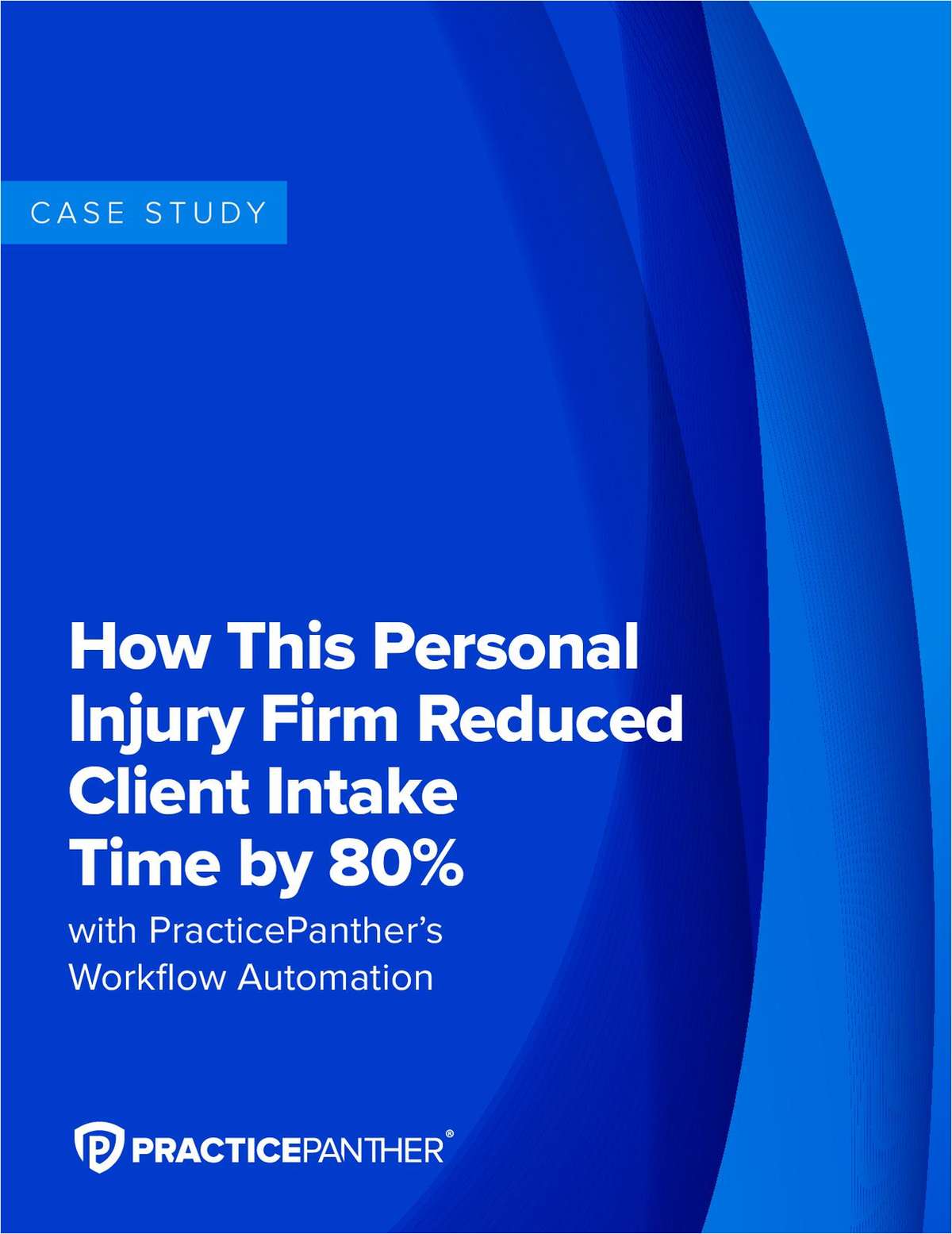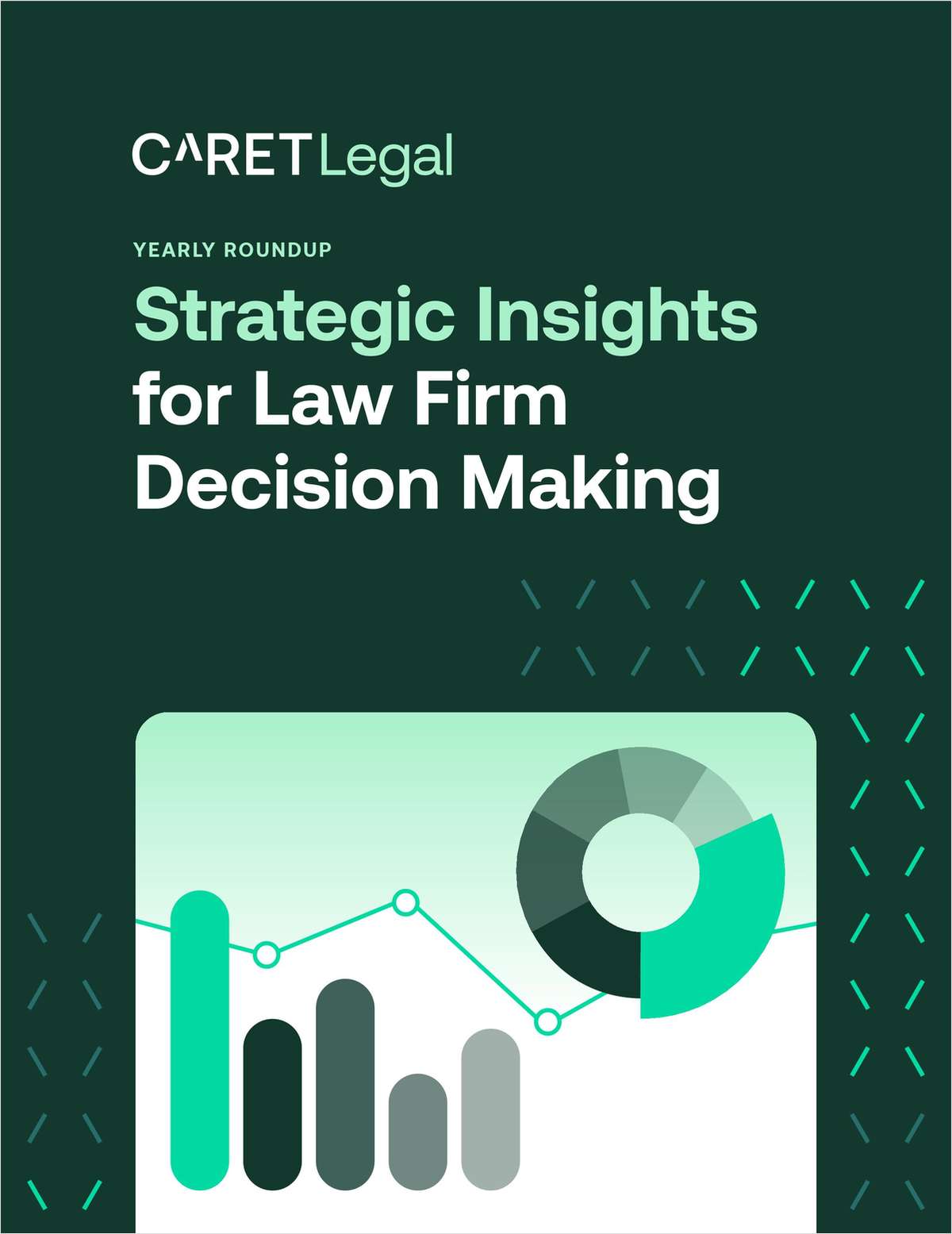More from ALM
Resources

How This Personal Injury Firm Reduced Client Intake Time by 80%
Brought to you by PracticePanther
Download Now

Leveraging Technology to Improve Employee Engagement and Client Satisfaction
Brought to you by CARET Legal
Download Now

Yearly Roundup: Strategic Insights for Law Firm Decision Making
Brought to you by CARET Legal
Download Now

Small Law Firm Playbook: The Expert's Guide to Getting the Most Out of Legal Software
Brought to you by PracticePanther
Download Now





